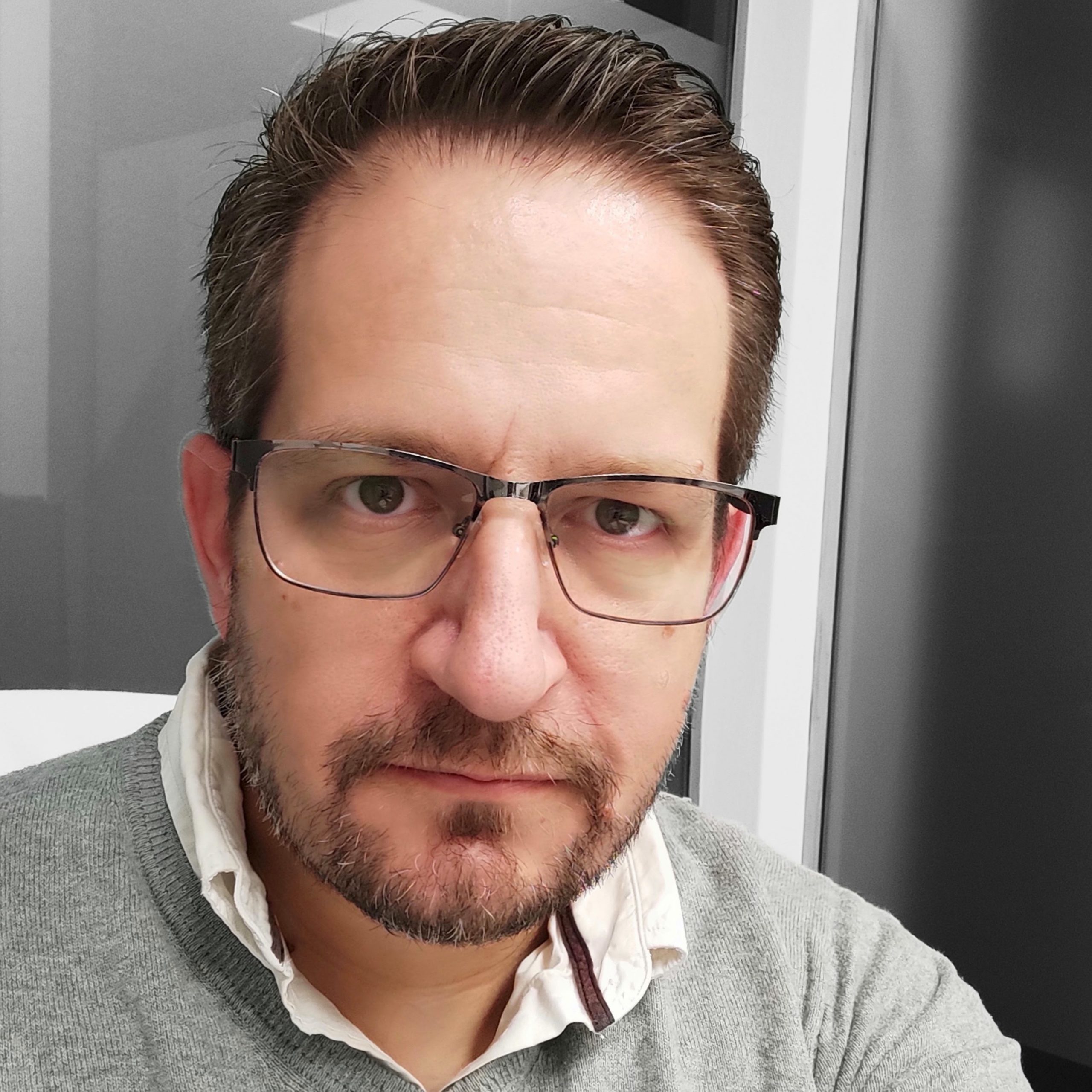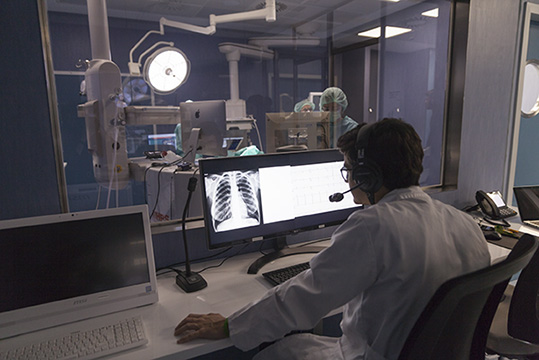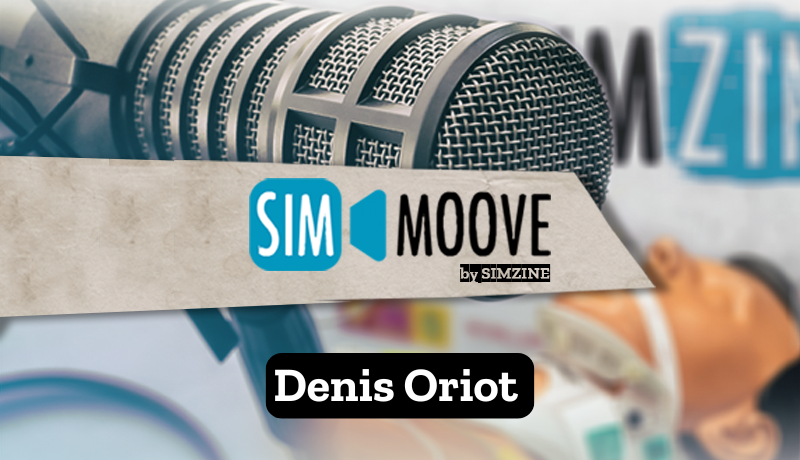The beginnings of a simulation technician who wanted to be the future Spielberg but fell in love with students, health professionals and dolls
A few days ago, while preparing a new simulation scenario in my workplace, I received a new email. It was my personal account and I didn’t know the sender, so the first thing I thought was… uff, another spam, but no, the email was from Pier, from SIMZINE magazine, offering me the opportunity to tell about my professional experience, my beginnings in clinical simulation as a technician…
First of all, let me introduce myself: my name is Vicente Prats, although everyone knows me as Chencho, and I currently work at the Virtual Hospital of the Catholic University of Valencia.
Recovered from the initial shock, and after wondering who might be interested in my life, I picked up the gauntlet and accepted the challenge.
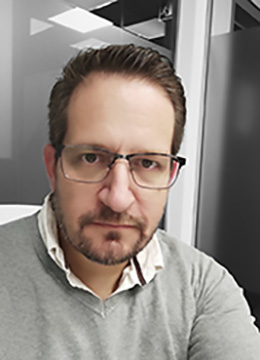
To start from the beginning and to be able to understand where I come from and where I want to go, you have to allow me a small cinematographic license, so come with me… fade to black, “several years ago” label and flashback to the past. It all started a little more than 6 years ago. I was sitting in my superior’s office, in the audiovisual communications faculty of the university where I had studied (yes, I studied audiovisual communication, I wanted to be the future Spielberg, like almost my entire class) where my boss proposed me a new professional challenge. I had been working as an audiovisual technician for 10 years and at the university’s medical school they were creating a simulation center for health sciences students. The challenge was that I was going to be in charge of operating the technical part of this center.
But why me? I asked him. Well, look, he replied, they’ve asked us for help because someone has to handle the cameras and microphones in the new center… and that’s how it all started.
When I got to my new job I only saw very large dolls lying on stretchers, in rooms that looked like a miniature hospital, and yes, in each of them there was a camera and a microphone… but what do these dolls do? ? What are they for? What am I doing here…? Little by little, with the invaluable help of the university instructors, and above all, with the help of the supplier’s technical team of the simulators that I was handling, I began to learn how to use the simulators and their software.
Once the “technical” part was controlled, it remained to be seen, what now? What is all this for?
During these exciting but erratic months, I was offered the opportunity to participate in a training for the center’s instructors, which could not have been more revealing. There I learned what clinical simulation is about, the simulation phases, the importance of being clear about the objectives of each of the cases, and something that fascinated me: the power of debriefing.
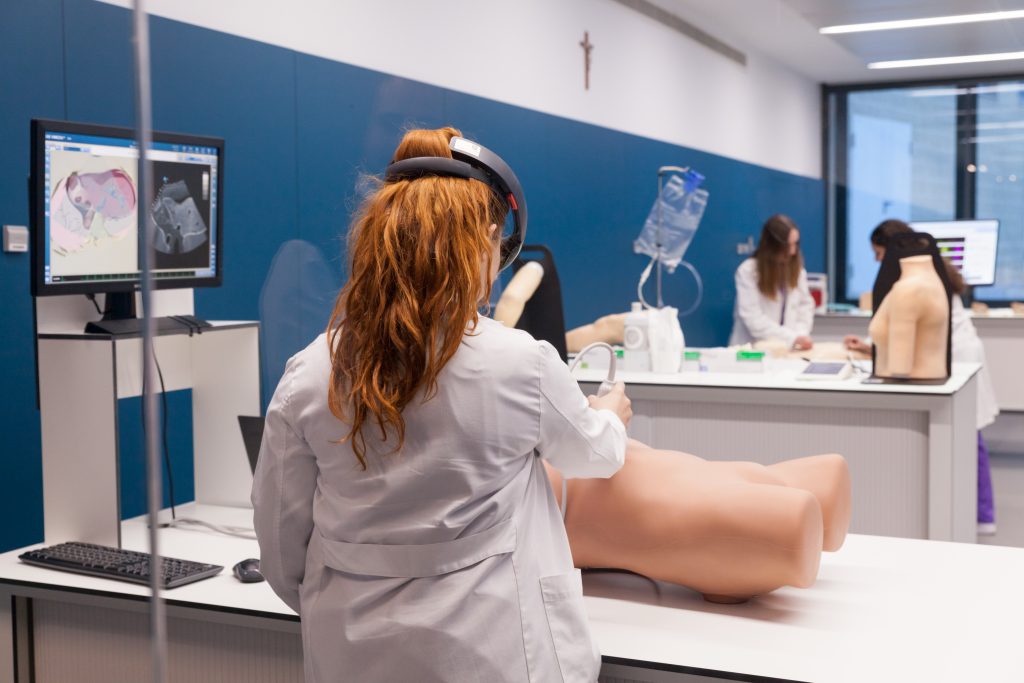
In order not to make it too long, I got involved as much as I could with my two fellow instructors. We designed the cases, the models together… until one day I decided to take the leap and move on to my current job, at the Catholic University of Valencia, as Simulation technician of its Virtual Hospital. In this center, in addition to the undergraduate students from different degrees of the Faculty of Health Sciences, I found another public that was highly stimulating for me: the health professionals, those who are already giving their life day by day in the world of health, but who find a gap in their schedule to continue training and guarantee the safety of their patients.
With this new public, a challenge opened up for us, since the physical and conceptual reality of the scenarios, their design and development, and especially the debriefing changed substantially. With this horizon I was also faced with some new challenges: adapting patient simulators to the real needs of real professionals, in addition to manufacturing those simulators that could not be obtained commercially.
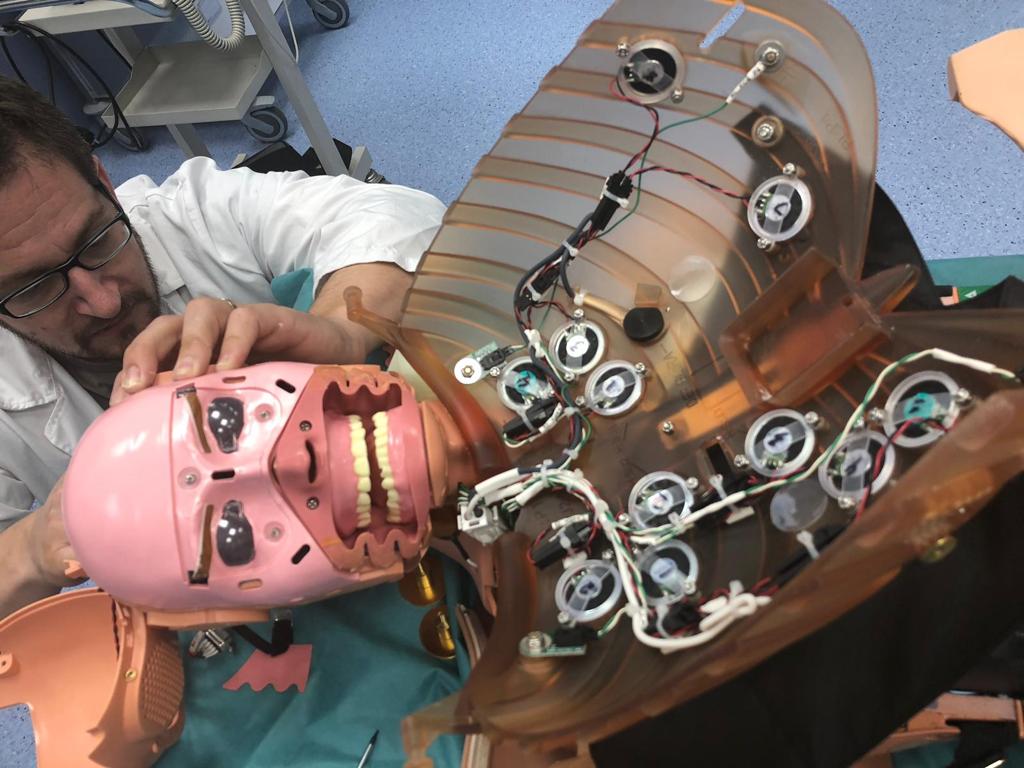
And we can ask ourselves: where did that saying that my job was going to be ‘handling four cameras and two microphones’ go? What use does my audiovisual training have in all this? These are the typical questions that all simulation technicians ask themselves, and they can be summed up in a single question, well in two: what is a simulation technician? and what do you have to study to be a simulation technician?
Unfortunately in Spain, and as far as I know in many other countries, there is still no regulated training in this regard. But what we do have is a great desire to work, and a forum of technicians with amazing skills and qualities. What I like the most is the collaborative spirit that makes us all solve each other’s doubts and problems.
So what is the future? Continue training, continue working and continue collaborating. Learning from what others masterfully do, because what we always say when we meet is that getting hooked on simulation is so easy. When you see the potential that clinical simulation has and you soak up in it, there is no turning back.
So let’s keep simulating, let’s keep breaking our mental processes and let’s keep investigating, with great curiosity for the reason of everything.


